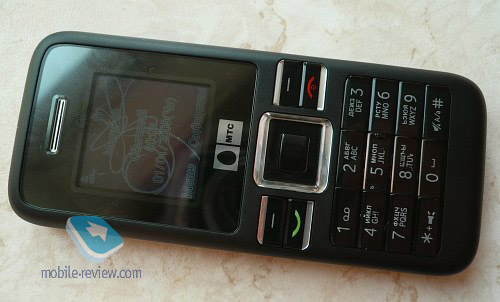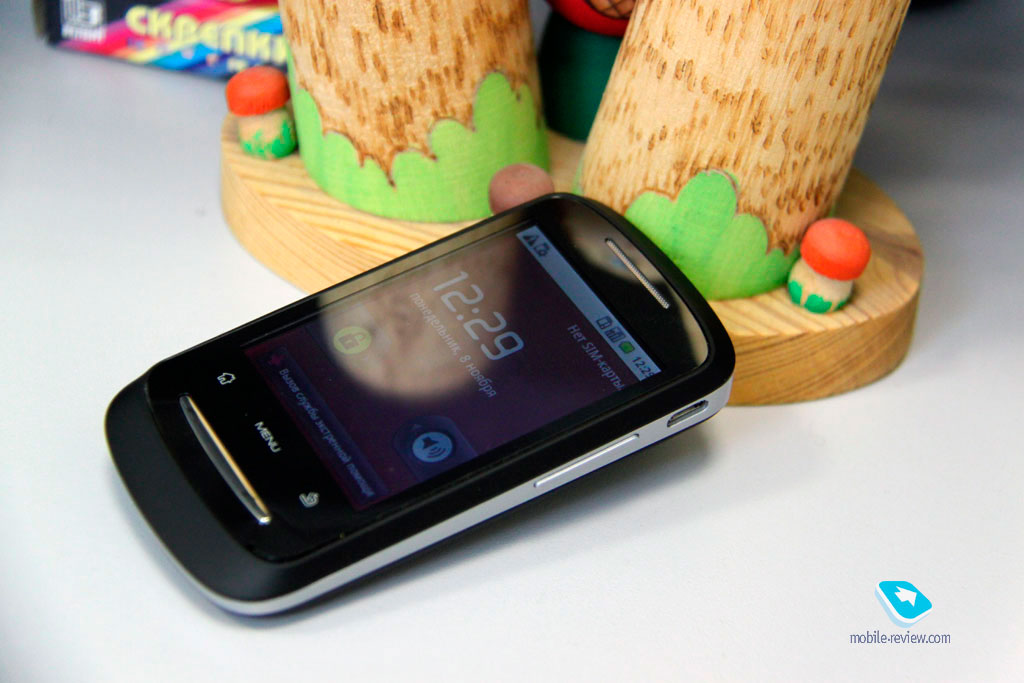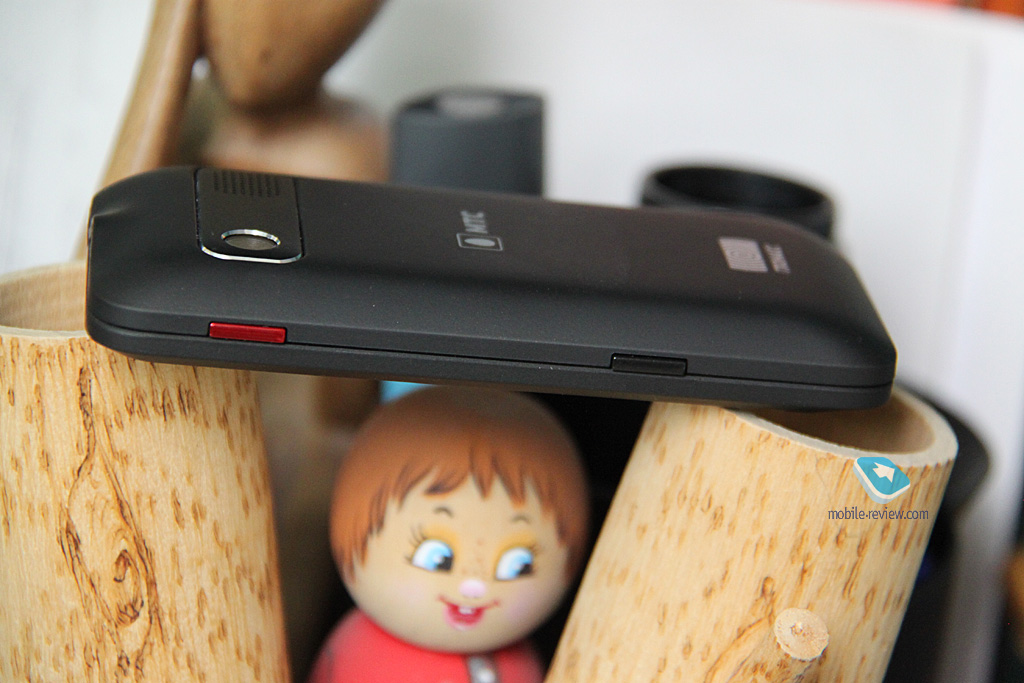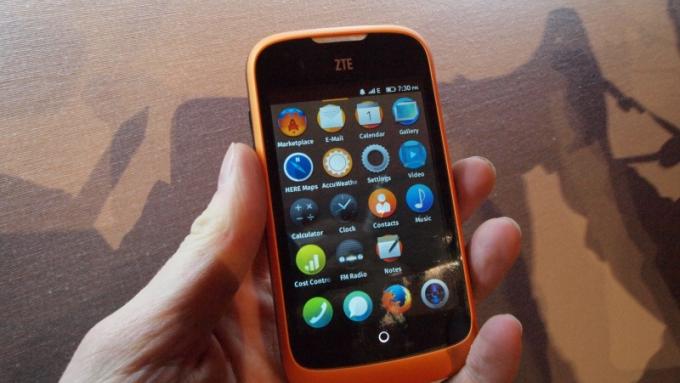I continue a series of materials about large Chinese companies, about which we know little. Seven texts have already been published: about LeEco, Xiaomi, Meizu, OnePlus, Lenovo, Huawei and Oppo. The turn came to the ZTE company.

commons.wikimedia.org
The history of ZTE begins in February 1985, when Zhongxing Semiconductor Co. was established in the Chinese city of Guangzhou. This is not a startup, because the company was founded not by one person, but by a group of investors.
This company was also founded by employees of the Ministry of Aerospace Industry of China. Supposedly, this is how the government allowed the military and officials to work as businessmen and scientists under cover. It is impossible to confirm or deny this information, but it is actively used to put pressure on modern ZTE. I will tell you about the origin of the company and its state ownership later.

ZTE Office
Chairman of the Board of Directors of Zhongxing Semiconductor Co. became Hou Weigui. Together with his investors, he raised 2.8 million yuan – a little less than a million dollars at the exchange rate at the time. A solid amount for a small company at the time.
As Hu Weigu recounted in his memoirs, first Zhongxing Semiconductor Co. was engaged in the production of electronic clocks, electric organs, telephones and other electronics. Apparently, they ordered goods from third-party factories and resold. Perhaps they were doing something else, but there is no information in open sources about this. In 1985, the company's turnover reached 350,000 yuan.
В середине 1986 года компания открыла научно-исследовательскую группу из восьми человек — по сути, маленький R&D отдел. This team started developing its own automatic telephone exchange (PBX), but it appeared only a year later. The ZX-60 station allowed the company to enter the telecommunications market and stay in it for a long time.
Zhongxing Semiconductor Co. successfully appeared at a time when China was actively engaged in import substitution. All telecommunications in the country in the 80s worked on imported equipment. Therefore, at that time, four companies appeared at once that began to work in this area – ZTE, Huawei and DTT and GDT, little-known to us.

This is how the presentation of the ZX500 took place
In 1989, the company launched the ZX500 500-line station. Hu Weigu himself called it the first Chinese PBX, in the development of which patents of foreign companies were not used. Perhaps, they nevertheless spied some developments from foreign competitors, but it is impossible to verify this. In any case, abandoning other people's technologies was strategically correct, because by 1990 two hundred similar companies had appeared in China, but they worked with foreign technologies and equipment.
Young Chinese companies were not allowed to deploy telecommunications networks in major cities dominated by Nokia, Motorola, Ericsson and others. Therefore, ZTE, like Huawei, began with the development of the provinces and small orders. Especially for small companies and rural areas, the company has developed a simplified ZX500A station.

Terms ZX500A
In March 1993, Zhongxing Semiconductor Co. changed its name to Zhongxing New Telecommunications Equipment Co. – abbreviated as ZTE. The capital of the new company rose to only 3 million yuan, but in eight years they collected a package of patents, established the production process, trained personnel and found clients. A little later, the company opened the first research institute in Nanjing.
ZTE continued to work with small public and private companies because their stations allowed them to deploy networks with a maximum of 500 subscribers. It was possible to expand the client base only after the creation of a new ZXJ2000 station with a channel for 2500 connections, it appeared in 1994.
New Markets
Инвестиции в R&D и пошаговое развитие позволило компании ZTE в 1997 году выйти на фондовую биржу Шэньчжэня. And in 1998, the company completed its first order for another country – the supply of equipment to Pakistan for $ 95 million. Immediately after that, ZTE opened its first office outside of China in Islamabad, the capital of Pakistan. Hu Weigu, in his story, called this deal the very first large order among the telecommunications companies in China, but this is debatable. For example, Huawei in 1996 already supplied equipment to Hong Kong, and a year later opened an assembly shop in Russia. But in any case, for the closed Chinese market, this is a great achievement.
In 1999, the company introduced its first phone, ZTE 189. A year later, it was the first among Chinese companies to obtain a license for devices supporting the CDMA communication standard – they immediately released a switch, a base station and a new phone with a removable SIM card.

After mastering the CDMA standard, ZTE received an order to build a network for the state-owned operator China Unicom for a million subscribers. At the same time, ZTE opened a representative office in Russia as a subsidiary of the ZTI Corporation – they were engaged in the supply and configuration of equipment for local operators and companies. The company was negotiating the supply of equipment to Svyazinvest, but the first customer was Moscow Cellular Communications (Sky Link).
At this point, I propose to skip a few years until 2007, because during this period nothing interesting happened for the average consumer. The company managed to enter the Hong Kong stock exchange, launch a line of equipment for working in 3G networks and become the largest telecommunications company in China.
By 2007, more than half of the proceeds from the supply and customization of ZTE telecommunications equipment came from contracts with foreign companies. The company has become the world leader in the supply of CDMA equipment and entered the top 5 in GSM equipment. If you are interested in the details of how the company developed the telecommunications market, then I advise you to read the story of Hu Weigu. This is a long article dedicated to the 20th anniversary of ZTE, where he talks about all the achievements. English text.
Apart from hardware, ZTE continued to work on phones. By 2007, the company entered the top 10 global phone manufacturers. It is difficult to single out interesting models among the entire line, so I put together a gallery so as not to focus on this.
-

ZTE G100, 2005
-

ZTE i610, 2005
-

ZTE i766, 2008
-

ZTE A18, 2005
-

ZTE F230, 2007
-

ZTE F865, 2005
-

ZTE G60, 2004
-

ZTE Momodesign, 2008
-

ZTE Coral 200 with solar panel
But in 2009, the MTS 236 phone appeared in Russia for 890 rubles! This model was made by ZTE by order of another operator Vodafone, with which MTS was then cooperating. Mobile-Review even has a review of this phone.

First mistakes
As the company scaled, the first scandals began to surface. In early 2008, ZTE was charged with bribery in the Philippines. It came to the president of the country – he tore up the contract and banned Chinese companies from participating in tenders for large projects.
In the fall of the same year, the Norwegian company Telenor banned ZTE from participating in tenders for six months. Details were never disclosed, allegedly one employee of the subsidiary company violated the code of ethics – ZTE confirmed the problem and said that he was not acting in the interests of the company, but was looking for personal gain. By the way, Telenor owns almost a third of Vimpelcom's shares, but this story has not touched the Russian operator.
Other industries
Все время ZTE часть прибыли вкладывала в R&D, создавая научные центры по всему миру. So the company amassed a huge database of patents, attracted new staff and opened up new industries for business. Few people know that in addition to telecommunications and the production of smartphones, ZTE is engaged in the development of technologies for the oil and gas industry and build power plants on solar panels.
ZTE began its journey to the power industry by building the first solar power plant on the rooftop of its headquarters in Shenzhen. The station consists of 4536 photovoltaic cells, which provide 4000 kWh of energy per day – this is enough for office work.

Also, for example, ZTE was engaged in the modernization of the railway in Uzbekistan in 2012. By automating many processes, it was possible to increase the average train speed from 30 to 120 km / h and the overall transportation efficiency by 70%.
ZTE also built logistics centers for a tobacco company in Venezuela and set up the entire process of delivering goods from manufacturer to buyer. To do this, they began to put RFID tags in the packages, by which it was possible to track the goods.
And these are just three examples from ZTE's large portfolio. If you are interested, there are even more cases on their official website.
Smartphones
Mass release Android – ZTE smartphones began in 2010. The company got ZTE Blade, it was also produced under the brand of the British operator Orange and the name of San Francisco. In Russia, the company's smartphones have become popular mainly due to models for operators – for example, the MTS 916 was actually a ZTE Racer (X850) smartphone. It sold so well that they even had to raise the price a little to correct demand.

ZTE also partnered with American operator Sprint to release a fun iPod Touch case that turned it into an inexpensive 'iPhone'. In fact, it was a portable 3G modem in the form of a case that distributed the Internet over Wi-Fi. It was still impossible to make mobile calls from the player.

By the end of 2010, ZTE introduced the Light tablet. For the time, it was the classic 7-inch model and the Android 2.1 system, which was not at all suitable for the large screen.
IPhone killer
The most interesting result of the collaboration between ZTE and the Russian operator was the MTS 945, the world's first smartphone with GLONASS support. His presentation is connected with a funny story – Vladimir Yevtushenkov, head of AFK Sistema (owns MTS), showed the first GLONASS smartphone to Putin and said that it 'corresponds to iPhone 4'. It is still not clear what Yevtushenkov meant, but because of a careless phrase in the media, the phone was dubbed the 'iPhone killer'.

Of course, it was strange to compare the MTS 945 with an 'iPhone'. In addition, a Chinese company was engaged in the development of the smartphone, so the achievement for the domestic operator is doubtful. Although MTS had many ambitions and hopes. Before the launch, they planned to release a batch of 500 thousand pieces, then ZTE lowered the forecast to 100 thousand. In fact, they barely sold 5,000 phones in six months. Due to the failure, they had to abandon the release of new models.
Rapid growth
Like Huawei and Lenovo, ZTE began to storm the market with new smartphones. In 2011, the company sold 11 million smartphones – 4 times more than a year earlier.
By the second quarter of 2012, ZTE entered the top 5 global smartphone manufacturers. She has sold devices in Britain, Switzerland, Italy, Turkey, Russia and many other countries.

expertreviews.co.uk
Of the interesting models, I can single out ZTE Open – the first smartphone with Firefox OS. Back in 2013, the first ZTE smartphone under the Nubia brand was released – Z5. The site has an overview and explanation of the ideology of the new brand. With this smartphone, the company tried to enter a high price segment, almost premium. Famous designer Stefano Giovannoni worked on the exterior of the Nubia Z5. In fact, the smartphone did not offer anything premium, except for a high price.

uzdaily.uz
An interesting fact – ZTE in 2013 established the production of Grand X, V and M smartphones in Uzbekistan. To do this, they reequipped a ready-made clothing factory, and invested $ 3 million in the project. This enterprise collected smartphones for the domestic market, only 10% of the goods were shipped to neighboring Asian countries. Whether this plant is working now, I could not find out.
In 2014, two important events happened for ZTE – the company changed its logo and brought a sample of a modular smartphone to CES. The logo hasn't changed much, just the letters became rounded.

In 2015, the Nubia brand was moved to a separate company, Nubia Technology. This reform was carried out in order to promote the new brand in the international market. Nubia smartphones have to compete with flagships from other companies – Apple and Samsung.
In Russia, ZTE smartphones sold well, but only in pieces. In 2016, the company bypassed Apple in terms of supplies and took second place before Samsung. Of course, ZTE was not competing with Apple in the first place, but with other Chinese manufacturers.
Conflict with the USA
In 2016, it turned out that the US Department of Commerce has been monitoring ZTE for the past five years. The company was accused of illegal trade with Iran and North Korea – they did not sell not only their equipment, but also resold the goods of American companies. During the investigation, officers tried to trick the government and gave false leads. The ministry solved the case with the help of a ZTE lawyer's laptop, which somehow ended up in their hands. Even then it was possible to understand that a dirty game was being played on both sides, but that was only the beginning.
After the information was revealed, ZTE admitted its guilt: it seems that it happened a long time ago, and for so many years everything has changed in the leadership. The same Zhao Xiangming, who served as the company's spokesperson for the US government, rose from CTO to CEO several months before the scandal.
The investigation ended with a trial and a $ 1.2 billion fine. Although ZTE is considered a large company, it still lags behind Huawei in terms of revenue by about 4 times. Therefore, due to the 2016 fine for ZTE, it closed with a loss of $ 300 million.
Who is behind ZTE?
It is important to delve a little deeper into the organization of the company here. By ZTE we usually mean ZTE Corporation, but the most important is ZTE Holdings – it owns almost a third of the shares of ZTE Corporation. And shares of ZTE Holdings have already been divided in half between state-owned companies and private investors. To make it easier, I drew a diagram:

Percentage indicates the share of shares in the company
Two state-owned companies have appointed 5 directors for ZTE Holdings, and four more have been appointed by the private company Zhongxing WXT, which was created by the ZTE founding group in 1985. This is all the information from open sources about the management of ZTE. On paper, the company cannot be called state-owned, but we cannot assess the level of China's actual influence.
In general, all accusations of ties with the Chinese government and espionage go aside Huawei, but ZTE also sometimes gets hit. In addition, many media outlets call it a state company, which is not entirely correct.
What's next
Despite the troubles, in 2017 ZTE was still able to go into profit and compensate for almost the full cost of the fine. And this is despite the fall in sales of smartphones by almost 25%.

Nubia z17s
Back this year, Nubia Technology became independent – ZTE retained 49.9% of the company's shares. In fact, it looks more like a gimmick to protect smartphone sales from possible reputational problems of the main company. But smartphones account for a very small share of ZTE's revenues, so you can trust the division too.
The rest of the year passed quietly.
All the fun began in 2018. In February, there was an announcement that the US intelligence services made a recommendation not to use the devices Huawei and ZTE, allegedly used by the Chinese government to spy on Americans. But this event was quickly forgotten.
In mid-April, the US Department of Commerce made another complaint against ZTE. The fact is that the company, in addition to the fine, had to fulfill several more conditions. One of them is to strip bonuses and reprimand employees who are involved in trade with Syria and North Korea. ZTE did not fulfill the requirement and awarded bonuses to those employees that were learned from the US government. As a result, the companies closed access to American equipment and technologies for 7 years.
Such a ban would mean a complete collapse for the company. Несмотря на большой пакет патентов и множество R&D центров, некоторые технологии китайской компании приходится закупать у американцев. For example, ZTE flagships are powered by Qualcomm processors. The local problem grew into a trade war between the two states.

Donald Trump tried to compromise with the Chinese government. ZTE pledged a $ 400 million bond to an American bank account and paid another $ 1 billion fine. But in June, at a meeting, the US parliament decided that the embargo on ZTE remained in place.
A month later, the US government changed its mind and lifted the ban on ZTE, but with some conditions. The company is on trial until March 22, 2022. The US Department of Commerce has specially allocated for this time an employee with full access to all documents, employees and information about the company.
The story between ZTE and the US has calmed down so far, all the pressure has shifted to the side of the company Huawei. Almost immediately after the lifting of the sanctions, ZTE even introduced the flagship Axon 9, although the situation with the temporary ban still affected the company's work.

In Russia, they also tried to complain about ZTE, but for a different reason. The TELMI Alliance, an association of domestic manufacturers of telecommunications equipment, has demanded that the government restrict the work of Huawei and ZTE. These companies occupy 90% of all contracts with communications and communications in the country and allegedly prevent domestic producers from participating in tenders. But this story did not lead to anything.
Now the scandal around ZTE has completely calmed down. The company is preparing to develop 5G – networks and is trying to somehow compensate for the losses from the proceedings with the US government.
Conclusion
ZTE's story is slightly different from other companies' stories. In those texts, I paid more attention to the company's devices, tried to find interesting models. But in the case of ZTE, it was difficult and boring for me to understand hundreds of smartphone models. I did not even mention the ZTE Axon M foldable smartphone with two screens, because this idea is not new and, in my opinion, is useless. There are many links to sources and reviews from Mobile-Review in the text for those looking to dive deeper.
